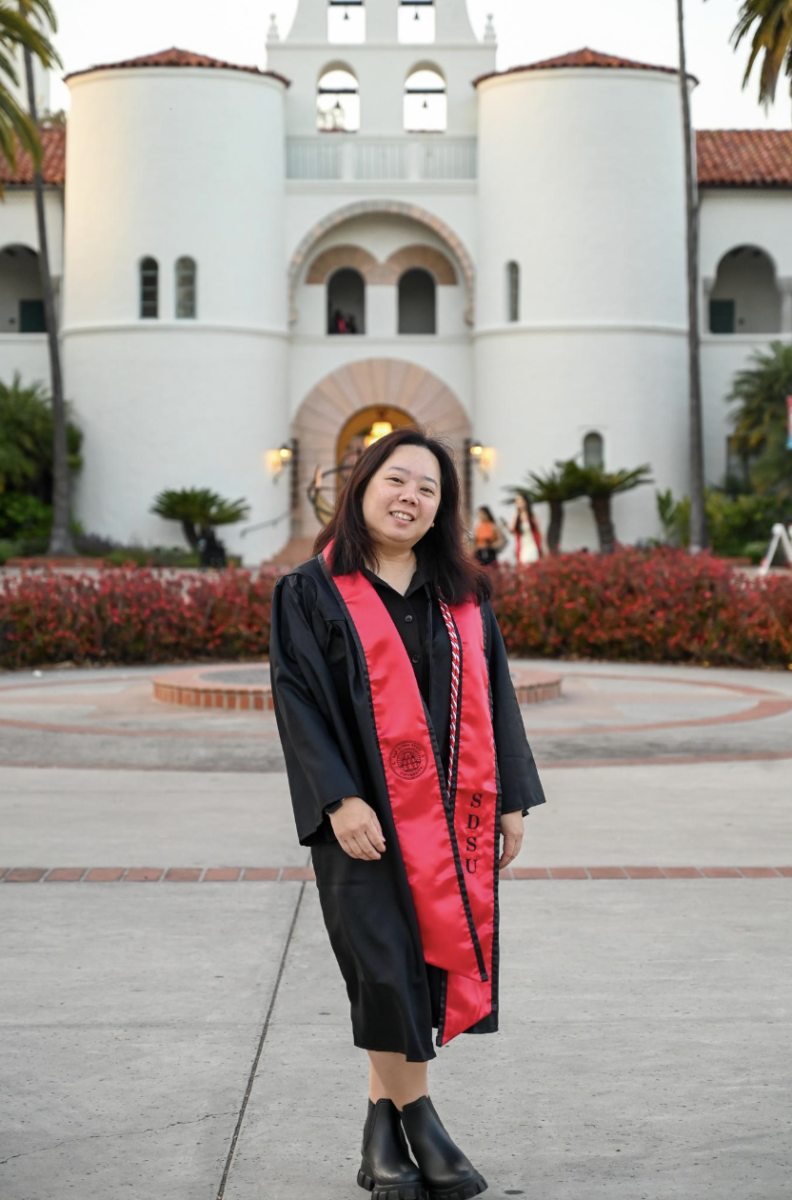The essence of San Diego State’s campus is epitomized by the iconic Hepner Hall, where a Spanish aura radiates throughout campus, creating an ideal setting for an Aztec.
At all hours of the day, this monumental structure is surrounded with the bustle of life. Pedestrians, skateboarders and cyclists move, meanwhile stillness is observed by verdant grass and vibrant flowers.
During a late-night trek home from the library last week, I noticed sprinklers gushing on the lawn in the midst of a rainstorm. I thought, SDSU has made so many water-wise achievements in response to California’s drought, why was this happening?
Hundreds of gallons of potable water were being wasted doing a job that the environment already was taking care of.
Obviously, this was shocking to see because California is amid one of the most serious droughts on record.
But what shocked me was that, despite SDSU’s many thorough efforts to conserve water, no one seemed to be monitoring irrigation systems during the downpour.
Usually automatic sprinklers are a good thing, especially in San Diego where the weather is generally predictable. However, turning off irrigation systems during a storm is common sense, and San Diego County Water Authority encourages turning them off for the following week as well.
Government officials are telling us to conserve, making me wonder why vast amounts of campus are still covered in lawn.
SDSU has made many smart landscaping decisions, like in the Conrad Prebys Aztec Student Union. Many students might not know the student union is served by an intricate rainwater collection system.
This system consists of two underground tanks that can hold up to 50,000 gallons of captured rainwater, which is then reused to irrigate campus.
Carefully designed pavement in the student union allows for storm water collection, which then goes into a storm water tank, helping the environment by eliminating discharge into a storm water system.
Finally, the collected rainwater goes to an underground stormceptor that removes pollutants from the run-off. The student union is the zenith of SDSU’s water conservation efforts, but the campus should have stricter limits on when it can be used. Watering during a downpour should be off-limits.
SDSU has created drought-tolerant landscapes in certain areas of campus, proving that saving water does not have to be high-tech to be effective. One specific water-wise landscape is the Mediterranean Garden near the Physical and Life Sciences Buildings.
This area, planted with drought-tolerant specimen from five continents, was created in the 1990s by our staff and faculty. Two decades later, it still provides a diverse yet sustainable and aesthetically pleasing hangout for students. While verdant lawn and flowers are lively and beautiful, the Mediterranean Garden thrives because it mimics native conditions.
SDSU’s response to the drought is thorough and effective, which only magnifies the mistake of leaving the sprinklers on during the rainstorm. Greenery is a gift — if lawn is going to continue covering thousands of square feet of campus for purely decorative purposes, it should not be watered excessively.
Just enough to preserve the beauty and livelihood of campus while adding to Hepner Hall’s quintessential glory.






